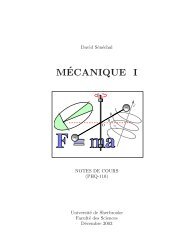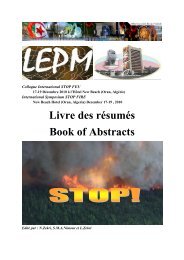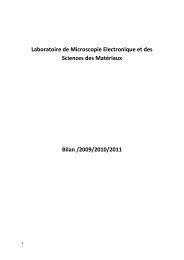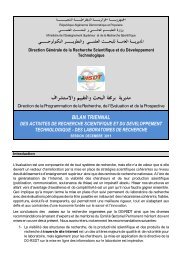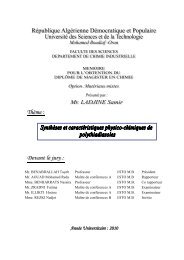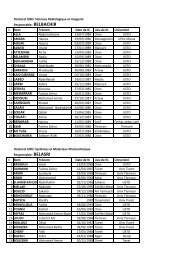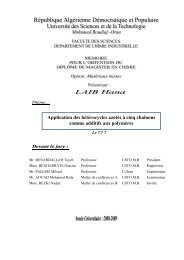Baziz Meriem magister.pdf - Université des Sciences et de la ...
Baziz Meriem magister.pdf - Université des Sciences et de la ...
Baziz Meriem magister.pdf - Université des Sciences et de la ...
Create successful ePaper yourself
Turn your PDF publications into a flip-book with our unique Google optimized e-Paper software.
Figure II. 15 : Dopage protonique <strong>de</strong> <strong>la</strong> polyaniline.<br />
II.5.4. Différentes voies <strong>de</strong> synthèses <strong>de</strong> <strong>la</strong> polyaniline<br />
La polyaniline est généralement, obtenue par oxydation directe <strong>de</strong> l’aniline ou par<br />
oxydation électrochimique dans <strong><strong>de</strong>s</strong> conditions aci<strong>de</strong>. La métho<strong>de</strong> <strong>de</strong> synthèse est en fonction<br />
<strong>de</strong> l’application visée.<br />
La synthèse par voie chimique oxydante développée par MacDiamid <strong>et</strong> al. en 1984 s’est<br />
imposée comme <strong>la</strong> procédure standard pour l’obtention <strong>de</strong> <strong>la</strong> PANI [36]. Le protocole<br />
réactionnel m<strong>et</strong> en présence un oxydant tel que le peroxodisulfate d’ammonium ((NH ) S O )<br />
4 2 2 8<br />
[37], le bichromate <strong>de</strong> potassium (К Сг O ) [38] ou le trichlorure ferrique (FeCl 3 ) [39].<br />
2 2 7



